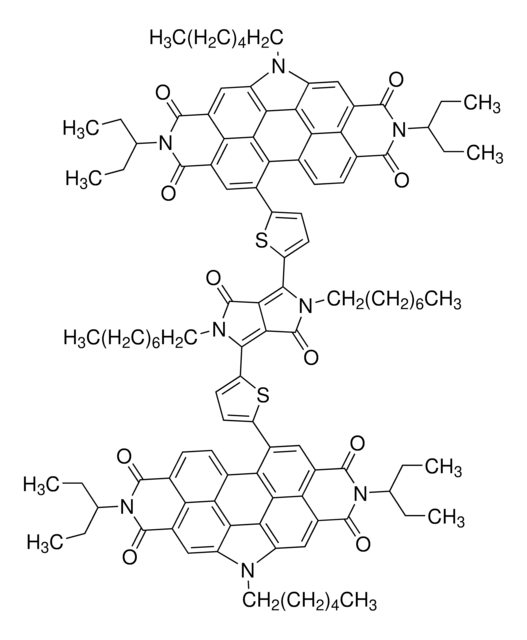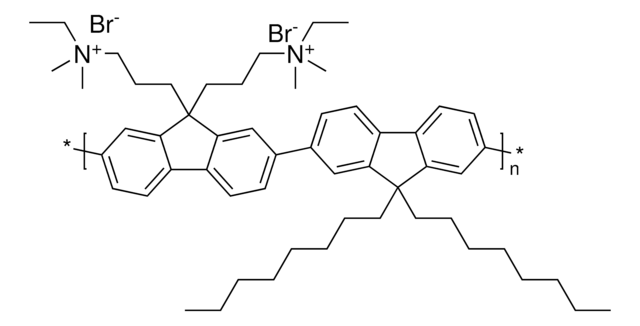推荐产品
描述
Band gap: 1.55 eV
化驗
≥99%
形狀
solid
溶解度
chloroform: soluble
軌道能量
HOMO -5.65 eV
LUMO -4.10 eV
SMILES 字串
Fc1cc2c(cc1F)C(=C(C#N)C#N)\C(=C\c3[s]c4c([s]c5c4[n](c6c7[n](c8c([s]c%10c8[s]c(c%10CCCCCCCCCCC)\C=C%11/C(=O)c%12c(cc(c(c%12)F)F)C/%11=C(C#N)C#N)c7c9n[s]nc9c65)CC(CCCC)CC)CC(CCCC)CC)c3CCCCCCCCCCC)\C2=O
InChI 密鑰
XJRVXAOYOOOQLU-LAGONYLDSA-N
正在寻找类似产品? 访问 产品对比指南
一般說明
應用
儲存類別代碼
11 - Combustible Solids
水污染物質分類(WGK)
WGK 3
閃點(°F)
Not applicable
閃點(°C)
Not applicable
其他客户在看
商品
The emerging organic photovoltaic (OPV) technology is very promising for low-cost solar energy production.
Professor Chen (Nankai University, China) and his team explain the strategies behind their recent record-breaking organic solar cells, reaching a power conversion efficiency of 17.3%.
相关内容
Organic electronics utilizes organic conductors and semiconductors for applications in organic photovoltaics, organic light-emitting diodes, and organic field-effect transistors.
Organic electronics utilizes organic conductors and semiconductors for applications in organic photovoltaics, organic light-emitting diodes, and organic field-effect transistors.
我们的科学家团队拥有各种研究领域经验,包括生命科学、材料科学、化学合成、色谱、分析及许多其他领域.
联系技术服务部门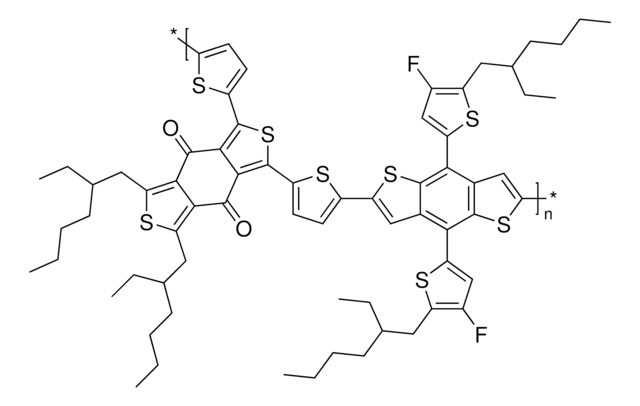
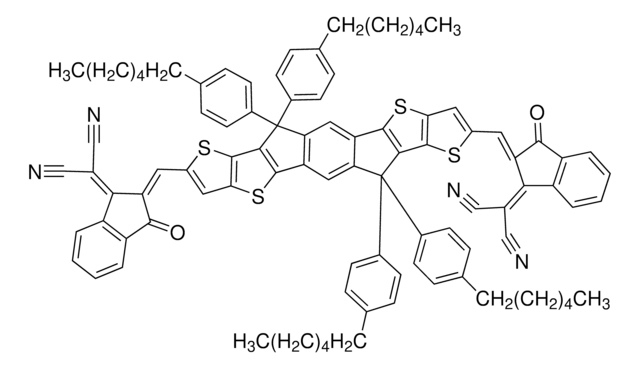

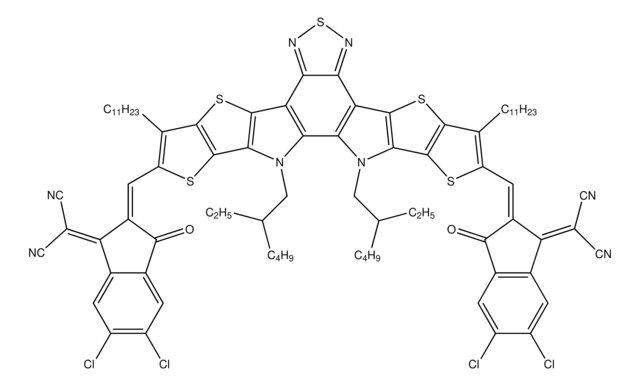
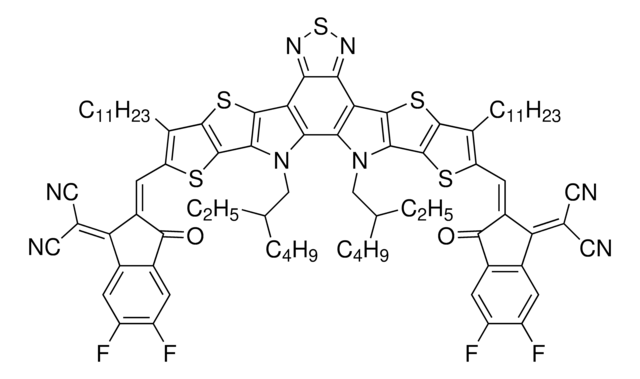
![聚 [2,6′]-4,8-二(5-乙基己基噻吩)苯并 [1,2-b;3,3-b] 二噻吩 ] {3-氟-2 [(2-乙基己基)羰基] 噻吩 [3,4-b] 噻吩二基 })](/deepweb/assets/sigmaaldrich/product/structures/187/203/ca94f947-403e-4832-8656-fc754d4148f5/640/ca94f947-403e-4832-8656-fc754d4148f5.png)
![[6,6]-苯基 C 61 丁酸甲酯 ≥99%](/deepweb/assets/sigmaaldrich/product/structures/359/221/d990c746-0960-4c69-bf76-fe09b193824d/640/d990c746-0960-4c69-bf76-fe09b193824d.png)
![3,6-二(2-噻吩基)-2,5-二氢吡咯并[3,4-c]吡咯-1,4-二酮 97%](/deepweb/assets/sigmaaldrich/product/structures/209/681/63a4048f-a2a7-496b-814d-ccb4b5b76124/640/63a4048f-a2a7-496b-814d-ccb4b5b76124.png)
